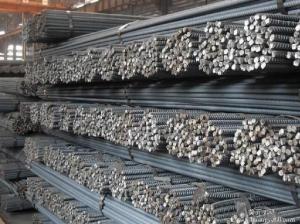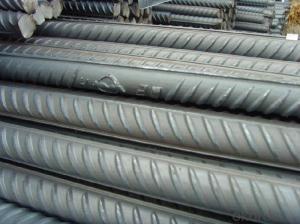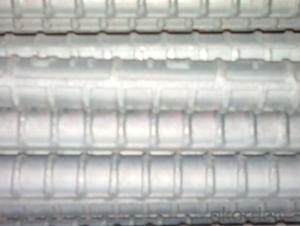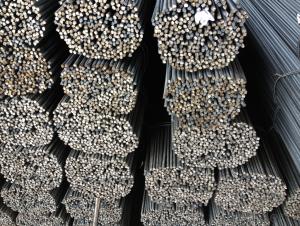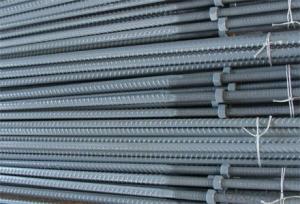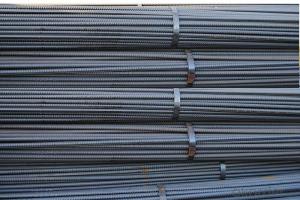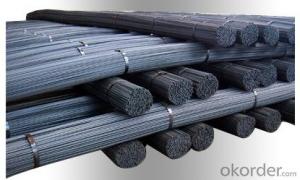Steel Deformed Rebars ASTM GR40
- Loading Port:
- China Main Port
- Payment Terms:
- TT or LC
- Min Order Qty:
- -
- Supply Capability:
- -
OKorder Service Pledge
OKorder Financial Service
You Might Also Like
Product Description:
OKorder is offering Steel Deformed Rebars ASTM GR40 at great prices with worldwide shipping. Our supplier is a world-class manufacturer of steel, with our products utilized the world over. OKorder annually supplies products to African, South American and Asian markets. We provide quotations within 24 hours of receiving an inquiry and guarantee competitive prices.
Product Applications:
Steel Deformed Rebars ASTM GR40 are ideal for structural applications and are widely used in the construction of buildings and bridges, and the manufacturing, petrochemical, and transportation industries.
Product Advantages:
OKorder's Steel Deformed Rebars ASTM GR40 are durable, strong, and wide variety of sizes.
Main Product Features:
· Premium quality
· Prompt delivery & seaworthy packing (30 days after receiving deposit)
· Can be recycled and reused
· Mill test certification
· Professional Service
· Competitive pricing
Product Specifications:
Manufacture: Hot rolled
Grade: ASTM GR40,GR60
Size: 6mm-32mm
Certificates: ISO, SGS, BV, CIQ
Length: 6m – 12m, as per customer request
Packaging: Export packing, nude packing, bundled
| DEFORMED BAR | |
| SIZE d(mm) | theoretical kg/m |
| 6 | 0.222 |
| 8 | 0.395 |
| 10 | 0.617 |
| 12 | 0.888 |
| 14 | 1.21 |
| 16 | 1.58 |
| 18 | 2 |
| 20 | 2.47 |
| 22 | 2.98 |
| 25 | 3.85 |
| 28 | 4.83 |
| 32 | 6.31 |
FAQ:
Q1: How soon can we receive the product after purchase?
A1: Within three days of placing an order, we will arrange production. The normal sizes with the normal grade can be produced within one month. The specific shipping date is dependent upon international and government factors, the delivery to international main port about 45-60days.
Q2: How do we guarantee the quality of our products?
A2: We have established an advanced quality management system which conducts strict quality tests at every step, from raw materials to the final product. At the same time, we provide extensive follow-up service assurances as required.
Q3: what is the difference between actual weight and theoretical weight?
A3: All the section steel has two weights: actual weight and theoretical weight. Actual weight is the weighing out when the product delivered from the mill. Theoretical weight is calculated by pieces. The invoice can be based on each of them as your request.
Images:
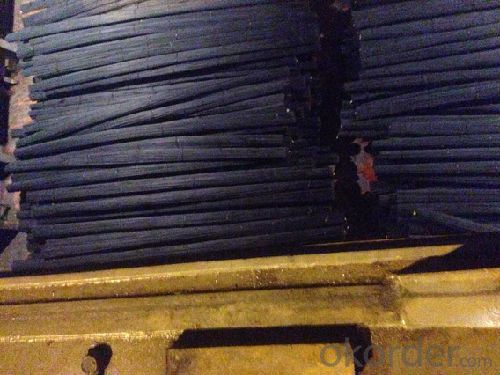
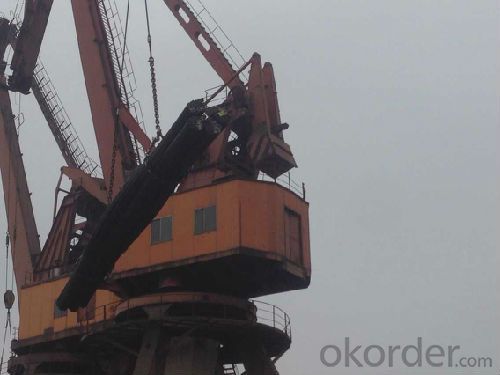
- Q: How do steel rebars resist alkali-silica reaction in concrete?
- Steel rebars resist alkali-silica reaction in concrete by serving as a barrier that prevents direct contact between the alkalis present in the concrete and the reactive silica aggregates. The protective oxide layer formed on the surface of the rebars acts as a physical and chemical barrier, preventing the alkalis from penetrating and reacting with the aggregates. Additionally, the high pH environment created by the concrete also helps in passivating the steel rebars, further enhancing their resistance to alkali-silica reaction.
- Q: Can steel rebars be used in offshore oil and gas platforms?
- Yes, steel rebars can be used in offshore oil and gas platforms. Steel rebars are commonly used in construction projects to reinforce concrete structures, and offshore platforms are no exception. These platforms are subjected to various environmental and operational factors such as wave loads, wind forces, and seismic activities. The use of steel rebars helps to strengthen the structural integrity and enhance the overall stability of the platforms. However, it is crucial to use corrosion-resistant steel rebars in offshore applications due to the harsh marine environment. The presence of saltwater, humidity, and exposure to chemicals can accelerate the corrosion process. Therefore, stainless steel rebars or epoxy-coated rebars are often preferred for offshore platforms to ensure long-term durability and prevent corrosion-related issues. Furthermore, it is essential to comply with relevant industry standards and regulations when using steel rebars in offshore oil and gas platforms. These standards outline specific requirements for material selection, fabrication, installation, and inspection to ensure the safety and reliability of the structures. In summary, steel rebars can be effectively used in offshore oil and gas platforms to reinforce concrete structures and enhance their strength and stability. However, the selection of corrosion-resistant steel rebars and adherence to industry standards are critical considerations to withstand the challenging marine environment and ensure the long-term integrity of the platforms.
- Q: Do steel rebars affect the weight of a structure?
- Yes, steel rebars do affect the weight of a structure. Rebars, also known as reinforcing bars, are steel bars used to reinforce concrete structures. When concrete is poured, rebars are embedded within it to provide additional strength and support. Since steel is much denser than concrete, the addition of rebars increases the overall weight of the structure. However, the weight increase is relatively small compared to the benefits gained in terms of structural integrity and load-bearing capacity. Rebars help distribute the load more evenly throughout the structure, making it more resistant to bending, cracking, and collapsing under heavy loads. Therefore, while rebars do add some weight to a structure, the advantages they bring in terms of safety and longevity far outweigh the slight increase in weight.
- Q: What are the potential drawbacks of using steel rebars?
- One potential drawback of using steel rebars is their susceptibility to corrosion. When exposed to moisture and certain environmental conditions, steel rebars can rust over time, leading to structural damage and reduced strength. Additionally, steel rebars are prone to thermal expansion and contraction, which can cause cracking or displacement in concrete structures. Lastly, the high cost of steel rebars compared to alternative materials might pose a financial drawback for construction projects on a tight budget.
- Q: How do steel rebars impact the overall energy efficiency of a structure?
- Steel rebars can have both positive and negative impacts on the overall energy efficiency of a structure. On one hand, steel rebars can enhance the structural integrity and durability of the building, leading to a longer lifespan and reduced energy consumption for repairs and maintenance. Additionally, steel rebars can be used to reinforce concrete, which provides better insulation and thermal efficiency. On the other hand, the production of steel rebars requires significant energy and emits greenhouse gases, contributing to the carbon footprint of the structure. Therefore, the overall energy efficiency of a structure depends on various factors, including the design, construction techniques, and the use of sustainable materials alongside steel rebars.
- Q: How are steel rebars anchored into existing concrete?
- Steel rebars are typically anchored into existing concrete by using different methods such as epoxy adhesive, mechanical anchoring systems, or by simply embedding the rebars into the fresh concrete during construction.
- Q: How do steel rebars contribute to the fire resistance of concrete?
- Concrete's fire resistance is enhanced by steel rebars in several ways. Firstly, steel rebars possess a non-combustible nature and a high melting point, ensuring they do not burn or add fuel to fires. This characteristic aids in preventing the spread of fire and maintaining the concrete's structural stability during fire incidents. Additionally, steel rebars act as reinforcement within the concrete, boosting its overall strength and load-bearing capacity. This reinforcement effectively prevents cracking or fragmentation of the concrete under high temperatures caused by fire. The presence of steel rebars also enhances the concrete's ductility, enabling it to deform and absorb energy during fires, rather than abruptly shattering or collapsing. Moreover, steel's thermal conductivity surpasses that of concrete, enabling it to effectively conduct heat away from the fire zone. This assists in dissipating heat and preventing it from reaching critical levels that could compromise the concrete's structural integrity. By absorbing and distributing heat, steel rebars contribute to slowing down the temperature rise within the concrete during fires. In conclusion, steel rebars contribute to concrete's fire resistance by providing structural stability, improving strength and load-bearing capacity, enhancing ductility, and dissipating heat. These attributes make concrete structures reinforced with steel rebars more resilient, enabling them to withstand fires for extended periods. As a result, the safety of occupants is increased, and potential property damage is reduced.
- Q: What are the different types of supports used for steel rebars in formwork?
- There are several different types of supports that can be used for steel rebars in formwork. Some common examples include chairs, spacers, bolsters, and hangers. These supports are designed to provide stability and ensure proper positioning of the rebars during concrete pouring and curing processes.
- Q: Can steel rebars be used in marine construction?
- Yes, steel rebars can be used in marine construction. However, it is important to use corrosion-resistant rebars, such as epoxy-coated or stainless steel rebars, to prevent corrosion from saltwater exposure.
- Q: What are the factors to consider while designing with steel rebars?
- Designing with steel rebars requires careful consideration of several factors to ensure the structural integrity and performance of a construction project. These factors include load capacity, structural requirements, durability, construction methodology, building codes, and cost-effectiveness. Firstly, the anticipated load capacity of the structure must be taken into account. The size, spacing, and placement of rebars should be determined based on the expected loads that the structure will bear. Secondly, different structural elements have specific design requirements. The design of rebars should be tailored to meet the unique load distribution patterns of beams, columns, slabs, and foundations. Thirdly, the durability of steel rebars is crucial, as they are exposed to various environmental conditions. Protective measures, such as using epoxy-coated rebars or providing sufficient concrete cover, should be considered to prevent corrosion. Additionally, the construction methodology used for the project can influence the design of rebars. Factors such as formwork, construction joints, and accessibility during the placement of rebars need to be taken into account. Moreover, compliance with building codes and regulations is essential for safety and legality. Designers must adhere to specific requirements outlined in the codes, including minimum rebar sizes, spacing, and cover requirements. Lastly, cost-effectiveness should be considered without compromising the safety and performance of the structure. Optimizing the placement and arrangement of rebars can help minimize material and labor costs. In conclusion, by carefully evaluating these factors, designers can create robust, safe, and long-lasting structures when working with steel rebars.
Send your message to us
Steel Deformed Rebars ASTM GR40
- Loading Port:
- China Main Port
- Payment Terms:
- TT or LC
- Min Order Qty:
- -
- Supply Capability:
- -
OKorder Service Pledge
OKorder Financial Service
Similar products
Hot products
Hot Searches
Related keywords











